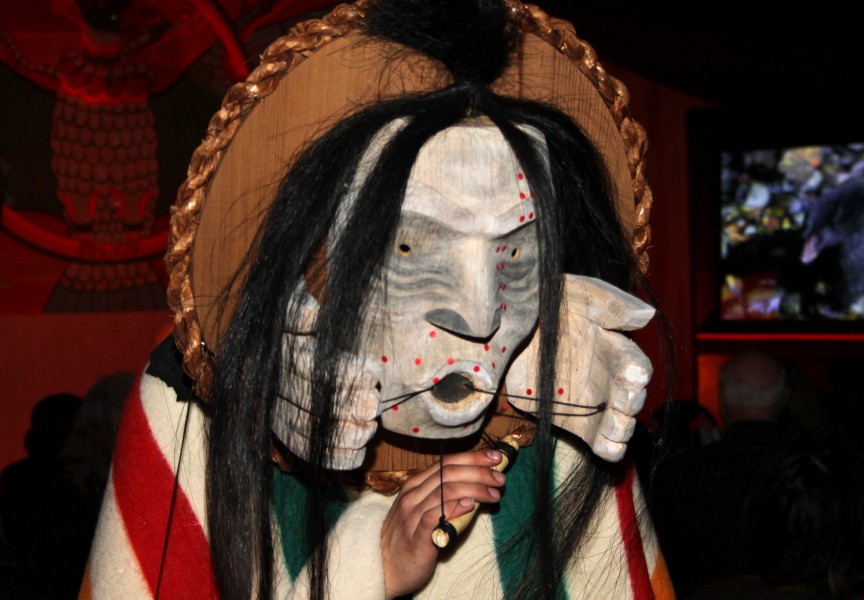The colours are faded and there is a little bit of damage, but Tseshaht First Nation is excited to take possession of a unique Maquinna hat crafted by renowned weaver Mable Taylor.
The piece was created as a gift for Eva and Floyd Joseph in 1978, according to Tseshaht Chief Councillor Hugh Braker.
“Floyd was from Squamish First Nation, and they lived in North Vancouver. They used to come to Port Alberni often, to visit Floyd’s Auntie Nadine.”
During one visit, Auntie Nadine took the couple to a house on the Inlet near the Plywood Mill, where they met an elderly woman with a great stack of small curio/collector baskets and no one to sell them to.
By that time, Mable, a member of Ditidaht who came into Tseshaht when she married Roy Taylor, was recognized as a preeminent traditional basketry artist, with artwork in museums and private collections across North America.
“She was still weaving, but not too much – mainly to make money to buy Christmas presents for her nieces and nephews.
“An American collector was supposed to come and get them, but he never showed up. So Mable was left with all these baskets that she had made.”
Fortunately, Eva and Floyd had a network of people who were interested in obtaining the pieces, and they arranged to sell the lot.
“When they were leaving, Mable asked if they could get her some bark – cedar and wild cherry, I believe,” Braker said. “They went home to North Van and stripped bark – it was something they had never done before – shipped it off to Mable and never thought anything more about it. They had fun doing it, they loved meeting her, and it was a nice thing.”
About six months later, the Josephs received a package in the mail, containing a hat decorated in vivid green, yellow, orange and blue.
“It’s quite faded now,” Braker said, turning the piece over. “Fading is just part of the natural aging process.”
He pointed out the central image on the body of the hat, which appears to be a pair of hands. And that makes the piece unique, Braker explained.
“Mable said it was the Hands of Friendship, because of what they had done for her,” he said. “I have over 300 pieces of Nuu-chah-nulth artwork and I have never seen Hands of Friendship.”
The hat itself is a “commoner’s” hat, Braker explained. Hats worn by higher-ranking individuals were topped with an orb to denote their status.
Braker said it is hard to pin a dollar value on the piece.
“I’ve seen Maquinna hats [offered] online for as much as $15,000 or more.”
Condition is an issue, however, he added.
“It’s not a complete hat. It doesn’t have the inner skull cap that usually goes inside; that would affect the price. On the other hand, it has a very nice provenance: there’s a nice story that goes with it. We were able to verify the story with the lady who donated it; we are able to tell the name of the maker and the approximate time she made it, and that kicks the price up quite a bit.”
Braker said it would be safe to estimate a value of about $3,000, had the Josephs decided to sell the piece.
“It’s really an amazing act of generosity, I think, on their part, to want to return this hat back to the home community of the lady who made it.”
But Tseshaht doesn’t care about the potential sticker price, Braker said.
“It’s the fact that it’s made by such a wonderful lady that’s so important to us. We don’t look at a hat like this for the monetary value; we look at it because of the history, and what it tells us about our people. So it’s a really nice addition to our band office.”
Braker said there are now plans to set up a display at the Tseshaht office, featuring the newly-acquired hat, along with a few other treasured artifacts.
“There are some descendants of Mable Taylor who are very excited that the hat is here.”
Mable Taylor was the last Tseshaht to live on Polly Point, and, besides being a noted artist, also served as a cultural leader for her community.
“She was related to the Shewish family, and our late chief, Adam Shewish, used to call her Auntie.
“She knew lots of stories and history, and songs. I remember her coming to practices all the time when we used to practice singing, many, many decades ago.”






